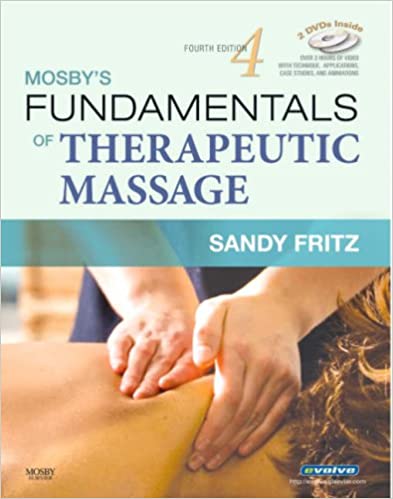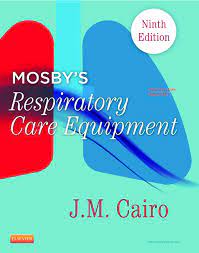Description
Test Bank For Mosby’s Fundamentals of Therapeutic Massage 4th Ed By Fritz
Chapter 02: Ethics, Professionalism, and Legal Issues
Fritz: Mosby’s Fundamentals of Therapeutic Massage, 6th Edition
MULTIPLE CHOICE
1. Sheena has been working with Traci, a 14-year-old girl. Traci reminds Sheena of herself at that age, and Sheena is finding it difficult to avoid wondering, between appointments, how Traci is doing and whether she is keeping up with her physical therapy. Sheena should be aware that she is struggling with:
a.
transference.
b.
countertransference.
c.
dual roles.
d.
mentoring.
ANS: B DIF: 2 REF: 64
2. Ben used to work for Phil, a more experienced massage professional, who helped him master the profession. Ben has the contact information of all of Phil’s clients, and he also knows what Phil charges for his services. If Ben considers talking with these clients and offering his services at a lower rate, he will be wrestling with:
a.
ethical decision making regarding a client’s needs.
b.
issues about informed consent concerning a colleague and a client.
c.
ethical decision making regarding a mentor.
d.
a challenge concerning standards of therapeutic relationships.
ANS: C DIF: 3 REF: 31
3. A “professional” is described as someone who has:
a.
a specialized body of knowledge.
b.
limited training.
c.
no need for legal recognition through certification or licensure.
d.
a job other than one of service.
ANS: A DIF: 2 REF: 35
4. Erik works in an electronic appliance store demonstrating how a neck massager can relieve tension. Craig works in a health care environment with patients who have been referred to him by a physician. Janis works in a salon and is an expert in both reflexology and classical massage. According to general public perception, what is each person’s professional status?
a.
Janis is a therapist; Craig is a practitioner; and Erik is a technician.
b.
Craig is a therapist; Janis is a practitioner; and Erik is a technician.
c.
Erik is a practitioner; Craig is a technician; and Janis is a therapist.
d.
Janis is a technician; Craig is a therapist; and Erik is a practitioner.
ANS: B DIF: 2 REF: 39
5. Which of the following are Asian approaches to bodywork?
a.
Amma, watsu, acupressure, and do-in
b.
Thai massage, Soma, Looyen, and shiatsu
c.
Tibetan point holding, Thai massage, and shiatsu
d.
Hoshino, Reiki, and Lomi lomi
ANS: A DIF: 2 REF: 40
6. Which of the following groupings are considered neuromuscular approaches?
a.
Proprioceptive neuromuscular facilitation, reflexology, and Bindegewebmassage
b.
Neuromuscular technique, Vodder technique, applied physiology, and Trager
c.
Muscle energy techniques, strain/counterstrain, Hellerwork, and reflexology
d.
Orthobionomy, trigger points, Trager, and myotherapy
ANS: D DIF: 2 REF: 40
7. Polarity, therapeutic touch, Reiki, and zero balancing would be defined as fitting with which of the following?
a.
Energetic (biofield) approach
b.
Structural and postural integration approach
c.
Integrated approach
d.
Neuromuscular approach
ANS: A DIF: 2 REF: 41
8. Scope of practice for massage therapy includes:
a.
sound, scientifically proven cures for certain specific ailments.
b.
therapeutic effects on the respiratory system.
c.
relief from sexual tension or malfunction.
d.
nutritional counseling.
ANS: B DIF: 2 REF: 14
9. Which of the following accurately describes scope of practice for therapeutic massage?
a.
Wellness massage practitioners can work with sick or injured people without direct supervision by a physician, nurse, or physical therapist.
b.
A massage practitioner cannot work with dysfunctional and complex postural patterns.
c.
Trained practitioners of rehabilitative massage include massage therapists, physical therapists, and athletic trainers.
d.
A wellness massage technician’s level of skill and training can be compared to that of a licensed electrician.
AN: C DIF: 3 REF: 46 | 47
10. A massage therapist is planning to consult an attorney to help him prove to a nonpaying client (1) that he was truthful; (2) that he did no harm and, in fact, prevented harm; and (3) that the treatment he gave outweighed any cost or burden. The three ethical principles focusing on are:
a.
respect, beneficence, and veracity.
b.
self-determination and autonomy, beneficence, and justice.
c.
veracity, nonmaleficence, and proportionality.
d.
client autonomy and self-determination, nonmaleficence, and beneficence.
ANS: C DIF: 2 REF: 53
11. Components of ensuring informed consent include covering the:
a.
goals of the therapeutic program and the risks and benefits.
b.
reporting of any inappropriate conduct from the client.
c.
prevention of transference and dual role
d.
client’s contact information.
ANS: A DIF: 2 REF: 54
12. Theo realizes that he must make a disclosure to his client. He does this by:
a.
showing the client a document that authorizes Theo to perform a service because Theo has provided adequate information for the client to make an educated choice.
b.
proving his extensive education in developing, maintaining, rehabilitating, or increasing physical performance through a variety of techniques.
c.
showing on demand the type of credential required by law as a means of regulating the practice of his profession.
d.
acknowledging and informing the client of a situation that interferes with Theo’s professional relationship with the client.
ANS: D DIF: 3 REF: 62
13. Which massage client may be least likely to be able to provide informed consent?
a.
Phyllis, who is in her final trimester of pregnancy, and says she is just exhausted
b.
Tom, a retired farmer who still drives into town to the clinic, even though he has received two parking tickets
c.
Joseph, who was in a motorcycle accident, and now communicates using a computerized keyboard
d.
Harriet, who is severely depressed and whose son has scheduled her appointment
ANS: D DIF: 2 REF: 54
14. Reciprocity means that:
a.
massage therapists can use the barter system for services.
b.
a location accepts the massage therapy license from another location.
c.
massage therapists are exempt from taxes when they move to a new location.
d.
scope of practice changes from one location to the next.
ANS: B DIF: 3 REF: 83
15. Annie, a recent graduate of massage training, is creating a continuing education plan. She enjoys the sciences and is intrigued by the physical benefits of massage. She also finds herself drawn to the energetic approaches. The plan that would best fit her areas of interest would include classes that:
a.
target the geriatric and hospice population.
b.
target reflexology.
c.
involve research in sport performance.
d.
involve research in body/mind healing.
ANS: D DIF: 3 REF: 41
16. Tim, a recent graduate of massage training, has shown skill in working with chronic pain management and is considering various work environments. Which of the following settings would best use the skill of this massage professional?
a.
A salon specializing in wraps and scrubs
b.
Cosmetology office
c.
Sports rehabilitation clinic
d.
Dermatology practice
ANS: C DIF: 3 REF: 37
17. Because of greater family commitments, a massage professional is experiencing an increase in stress response, including fatigue and restless sleep. If she is unable to manage the stress and maintain her professionalism, her regular clients may experience her treatments as:
a.
decreasing in empathy and becoming more mechanical.
b.
increasing in pressure with techniques applied more actively.
c.
feeling more relaxed and focused.
d.
being the same they have always been.
ANS: A DIF: 3 REF: 64
18. Rasheed, a massage practitioner with 2 years of professional experience, is experiencing some professional burnout and a sense of being overwhelmed. He feels isolated and would like to interact with others dealing with the same issues. What is he seeking?
a.
Peer support
b.
Mentoring
c.
Supervision
d.
Counseling
ANS: A DIF: 2 REF: 72
19. Eric, a massage therapist, is supervising Mandy, a new massage graduate, at a wellness center that serves a mixed client base. Mandy seems unsure of her skills and her body mechanics are not effective. Until she gains more experience, Eric will be scheduling only certain types of clients with her. Which of the following standards of practice is Eric following?
a.
Avoid false claims about massage benefit.
b.
Maintain accurate client records.
c.
Provide a safe and sanitary environment.
d.
Practice only those techniques for which one is adequately trained.
ANS: D DIF: 3 REF: 45
20. A client is upset that a massage professional who used to charge $50 per hour session is now charging $55 per hour session. What type of conflict does this involve?
a.
Value
b.
Interest
c.
Data
d.
Relationship
ANS: A DIF: 2 REF: 78
21. Ms. Hill is becoming increasingly uncomfortable with the massage therapist she has been seeing for a low back issue. Initially, the sessions were both enjoyable and effective, but the last three sessions have become tedious because the massage therapist keeps discussing various alternative therapies for low back care and asking whether Ms. Hill has followed up on any of the areas discussed. Ms. Hill is not interested in unfamiliar massage modalities and chiropractic care, and she has said this to the massage therapist, but the lecturing on other modalities continues. This situation may be an example of:
a.
confidentiality.
b.
transference.
c.
countertransference.
d.
right of refusal.
ANS: C DIF: 3 REF: 64
22. A massage therapist is having difficulty with clients lingering after the massage, and this is straining his schedule. He finds that clients want to talk after the session. The most likely cause is the massage therapist’s:
a.
body language.
b.
conflict management skills.
c.
dual role capability.
d.
inability to set boundaries.
ANS: D DIF: 2 REF: 65
23. The owner of a wellness center has noticed that the turnover in newly hired massage therapists has increased since he hired a new supervisor. On discussion with the supervisor, he is informed that the new hires refuse to follow her instructions and do what they are told. What form of conflict management style is this supervisor using?
a.
Smoothing over
b.
Negotiation
c.
Collaboration
d.
Dominance
ANS: D DIF: 3 REF: 79
24. A fitness center that employs six massage therapists expanded its facilities 6 months ago. The massage group has approached the owner four times to tell him that the massage area needed more soundproofing because conversations from the weight room can be heard inside the treatment rooms. Each time the owner smiles and nods, and says he will look into it, but nothing has been done. What way of dealing with conflict is the owner using?
a.
Collaboration
b.
Suppression
c.
Dominance
d.
Compromise
ANS: B DIF: 2 REF: 79





Be the first to review “Test Bank For Mosby’s Fundamentals of Therapeutic Massage 4th Ed By Fritz”